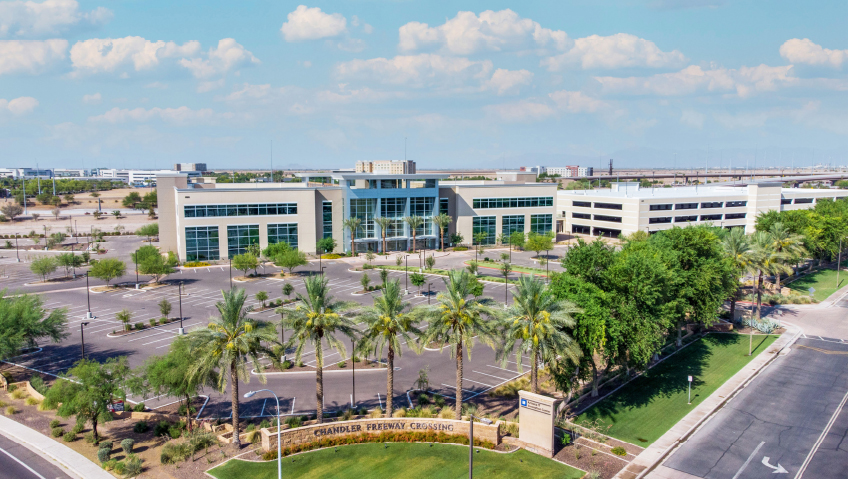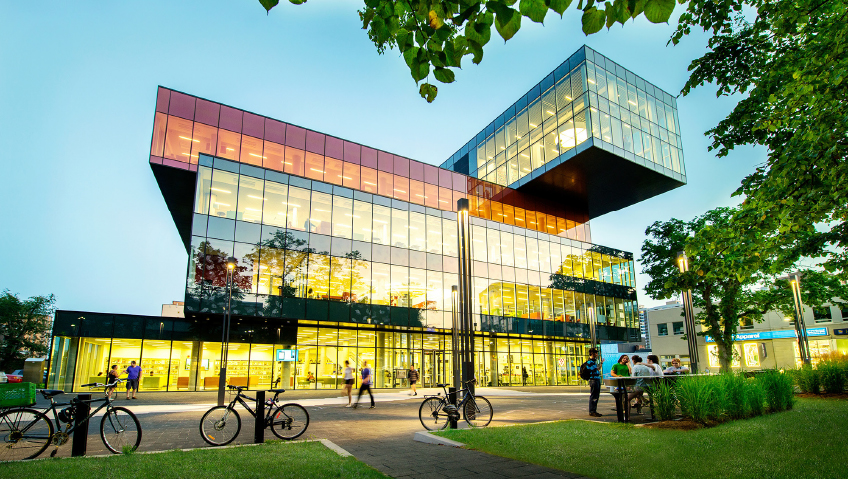Founded in 1912, the City of Chandler is the fourth largest city in Arizona, with over 280,000 residents. The city’s Economic Development Director, Micah Miranda, says that Chandler has been known for over 100 years as being a community of innovation, citing the city’s long history as a destination for advanced manufacturing that dates back to the 1960s.
Its legacy continues today with the likes of Intel, NXP Semiconductors, and other leading-edge technology companies becoming active in the city. Companies like these have chosen Chandler as a base thanks primarily to its stable business operating environment and a political climate that values private sector investment, according to Miranda.
Vice Chair Brad Anderson, of real estate firm Cushman & Wakefield in nearby Phoenix, feels that there are numerous specific advantages for corporate users in selecting Chandler as an office location.
First, Chandler sports the most diverse labor demographic within the metro area. “There is an overwhelming abundance of prospective employee candidates for each job created within this area,” compared to other cities across the United States, he says. This is a primary reason for the explosive growth that Chandler has been seeing over the past few decades.
Chandler offers lower-cost office space in terms of costs per square foot, parking, and operating and easy access in its immediate area, as well as a lower cost of living resulting from a diverse housing marketplace and a great quality of life overall. The cost of doing business in Chandler is generally extremely low compared to other locations, especially in areas like employment insurance and worker’s compensation.
The city’s pro-business environment has contributed to its historically high ranking for best-in-class public and private schools, as well as affordable living options and ease of access via its highways and roads into the city.
Miranda refers to several developments of interest within just the past year or so to support Chandler’s reputation, including a $20 billion investment by Intel that will add 3,000 employees to make a total of 15,000. Companies like NXP have also expanded, while Edwards Vacuum and other publicly traded companies have relocated headquarters to Chandler.
Miranda notes that, currently, there is momentum in high-quality projects supplying great jobs, all from businesses that are tremendous community partners. The label of community partner, as he and others use it, has to do with how many companies in the area are preparing the future workforce today, as many are collaborating with school districts and in volunteer opportunities to help young people better understand science, technology, engineering, mathematics.
These efforts include charitable contributions as well as organizing and attending events in tandem with city employees, like the annual science and technology fair, all to engage youth and explain why science and technology is a desirable career. “Companies in Chandler are in touch with the community as it relates to long-term education,” shares Miranda.
The city’s evolution into a desirable business hub did not happen overnight. Miranda explains that, over the past seven years, Chandler has made a diligent effort in diversifying its economy. “We’re not over-reliant on one industry or sector; we focus on base industries that present a good service here and that market nationally and internationally,” Miranda explains.
When the city contended with the coronavirus in 2020, there were many unknowns in play, and Chandler was heavily affected, the retail and restaurant industries in particular, and many large corporate users opting for remote working opportunities for employees, leaving offices sparser than before the pandemic.
To meet these challenges, Miranda’s economic development team set up an initiative called ‘Choose Chandler,’ to encourage residents to support local businesses, while implementing a business support program. These measures allowed the city to work closely with its restaurateurs and retailers to increase trade at local businesses and keep money local while educating citizens on the fiscal impact of these decisions.
The city also instigated financial support tools to help ensure job stability among these businesses. Although unemployment did increase during the beginning of the pandemic, the rate is now functionally zero percent. “If somebody wants a job in Chandler, they can get it,” Miranda says.
Overall, businesses have come through COVID quite well. With unemployment at a remarkable low, businesses across Chandler are hiring; the challenge comes with the availability of labor and access to new talent as businesses grow. “Economic development is built on filling up office space and ensuring that businesses looking for office space look to Chandler… this will be a long-term challenge,” says Miranda.
Corporate users are responding to this challenge by emphasizing the creation of spaces that will attract employees back to the office, such as creating enhanced environments with many amenities and being more flexible toward employees’ needs. This is the way the city will look to bring back workers who may have chosen remote opportunities over the last couple of years.
Miranda believes that corporate users in need of 50,000-square-foot or greater spaces will likely be the last to return to normal capacity. Currently, most users in the market are looking at smaller spaces. His team is responsible for generating leads and explaining to office users of all sizes why Chandler is the best choice.
Businesses are eagerly anticipating the return of the office worker, but the timing of that remains uncertain. Anderson sees the current office market as a challenging one for landlords, a trend that will likely continue throughout the rest of the year. Chandler is the second-largest office submarket within the Phoenix Metropolitan Area, or The Valley as it is known, only overtaken by midtown central Phoenix, and continues to benefit from larger users choosing it as their home base.
Miranda affirms that Chandler is home to an extremely well-educated and growing workforce, and lease rates are making moving here a wonderful opportunity. He reveals that there are a handful of overarching strategic goals that the city is looking to realize in the future. The foremost of these is redeveloping big-box sites for medical offices and family housing to reduce the amount of retail space in certain areas and to build more housing to encourage new families to stay in the area.
As well, the city will be looking to increase access to higher education opportunities through partnerships with educational institutions, preserve existing employment corridors, and avoid encroachment into residential areas. Miranda also mentions that Chandler tourism is tied to business travel, which puts tremendous emphasis on the city as a location for small business meetings and events. “For a small business traveler, our tourism team is ready to help make the coordination and execution of any event successful,” he says.
Further out from 2022, Anderson foresees Chandler becoming the largest office submarket in the Valley by surpassing the Midtown submarket in size. Beyond that, its office market will continue to outperform in both growth and demand, potentially to beyond pre-COVID figures.






